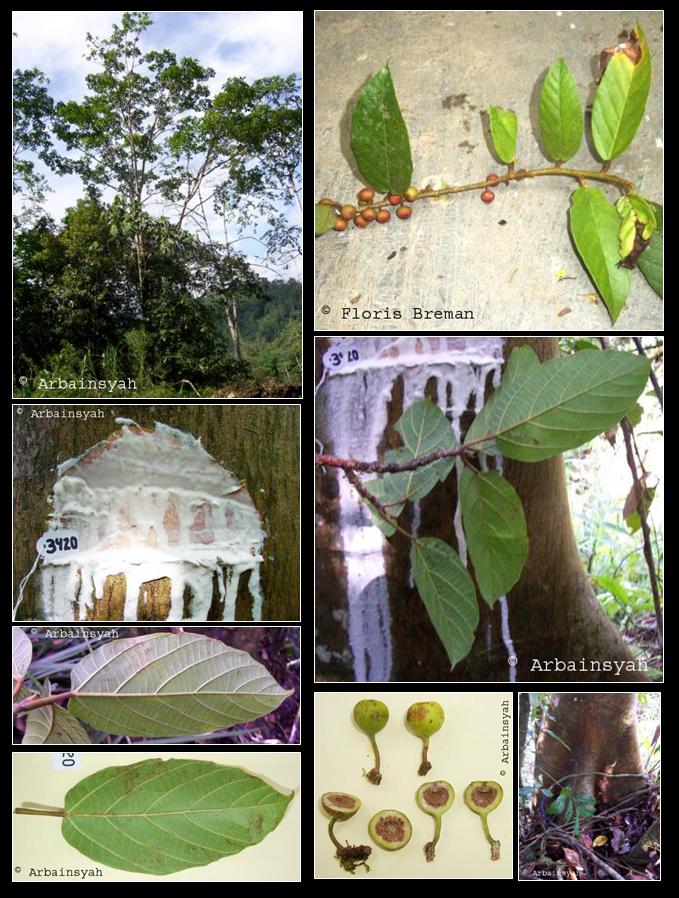Ficus variegata Blume, Bijdr. (1825)
Latin for 'stained'.Synonyms
Covellia racemifera (Roxb.) Miq.
Ficus agusanensis Elmer
Ficus amboinensis Kostel.
Ficus cerifera Blume ex Bleekrode
Ficus ceriflua Jungh.
Ficus chlorocarpa Benth.
Ficus compressitora Elmer
Ficus cordifolia Blume
Ficus domestica Zipp. ex Miq.
Ficus ehretioides F.Muell. ex Benth.
Ficus garciae Elmer
Ficus glochidiifolia Hayata
Ficus gummiflua (Miq.) Miq. ex Jungh.
Ficus ilangoides Elmer
Ficus integrifolia Elmer
Ficus konishii Hayata
Ficus laevigata Blanco
Ficus latsoni Elmer
Ficus paucinervia Merr.
Ficus polysyce Ridl.
Ficus racemifera Roxb.
Ficus subopaca Miq.
Ficus subracemosa Blume
Ficus sum Gagnep.
Ficus sycomoroides Miq.
Ficus tenimbrensis S.Moore
Ficus variegata var. chlorocarpa (Benth.) King
Ficus variegata var. garciae (Elmer) Corner
Ficus variegata var. ilangoides (Elmer) Corner
Ficus variegata var. paucinervia (Merr.) Sata
Ficus variegata var. pilosior Miq.
Ficus variegata var. rotundata Sata
Ficus variegata var. sycomoroides (Miq.) Corner
Ficus viridicarpa Corner
Sycomorus capensis forma tropica Miq.
Sycomorus gummiflua Miq.
Urostigma javanicum Miq.
Diagnostics
Mid-canopy tree up to 40 m tall and 110 cm dbh. Stem with white sap.
Stipules ca. 9 mm long, glabrous to hairy. Leaves alternate, simple, tripli- to
penni-veined, venation conspicuous, glabrous to hairy below. Fruits ca. 12 mm
diameter, red-brown, globose figs, placed on the stem.
Description
Dioecious tree, up to 40 m tall, 110 cm diameter, without free hanging aerial roots; buttresses
up to 2 m high. Bark grey-brown, smooth. Twigs 0.2-0.4 cm thick, reddish brown. Stipules
ovate, up to 0.6 cm long, silky hairy outside, caducous. Leaves spirally arranged,
coriaceous, glabrous; narrowly oblong, or ovate to lanceolate, 9-20 x 4.5-12 cm, base
symmetric, cuneate to rounded or subcordate, margin entire (toothed in saplings), plane,
apex acuminate, acumen up to 1.5 cm long; midrib flat above; lateral veins 5-7 pairs,
with shorter veins in between, well-spaced, curved, not steeply ascending, raised on both
surfaces, basal pair conspicuous, reaching more than 1/2 the length of the blade, often
with a small gland in the axils; intercostal venation scalariform, distinct to faint on both
surfaces; petiole 3-8 cm long. Syconia borne in dense clusters on short twigs or tubercles
arising from stem and branches, ripening to rose-red, often streaked with white dots,
ellipsoid or pear-shaped, 2-2.5 cm diameter, apex depressed; peduncle 1-3 cm long;
basal bracts 3, persistent; internal bristles absent. Tepals 3-4, lanceolate or spathulate,
free or shortly united at the base, glabrous, red to brownish. Achene 1ĘC1.5 mm long,
lenticular, slightly keeled, smooth. [from Tree Flora of Sabah and Sarawak]
Ecology
In regrowth, forest gardens and disturbed or open sites in mixed dipterocarp
forests up to 500 m altitude. Along rivers and streams or on alluvial sites with
sandy to clay soils, also on limestone. The figs of Ficus variegata have been
reported to be eaten by 41 animal species (5 birds, 15 bats, 7 monkeys, 7 marsupials).
Uses
Wood used for knife sheaths. Latex used as food additive (in palm starch).
Fruits edible.
Distribution
Northeast India and South China to the Solomon Islands and Australia.
Local names
Borneo: Ayak, Kara, Kendang, Nyawai, Tandilan, Tentabau.
English: Common Red Stem Fig; Fig; Fig, Variegated; Fig, Green Fruited; Variegated Fig;
Green Fruited Fig; Fig, Common Red Stem.
